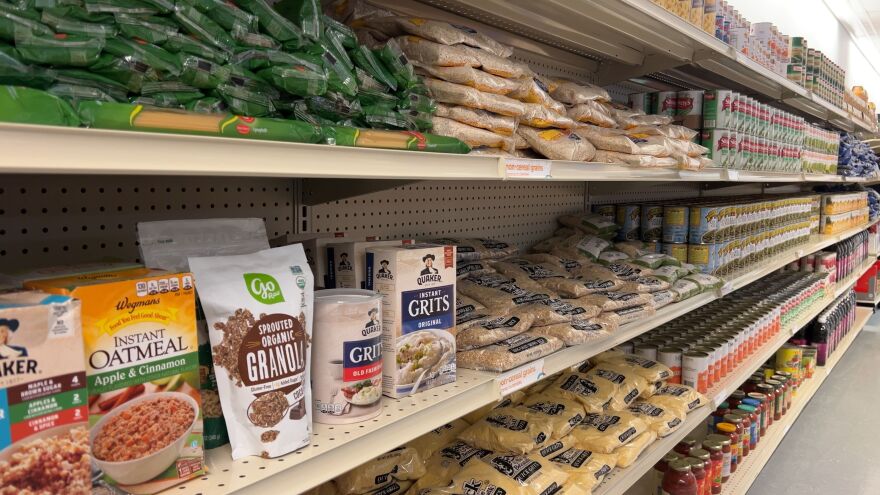Food insecurity continues to rise in the Rochester region, according to Foodlink officials and a new report from the anti-hunger group Feeding America.
According to Foodlink, the number of requests for food assistance totaled 1.86 million in 2024 across its network of more than 350 food pantries and meal programs, a 40% increase over 2023.
“There are more families, more individuals, turning to food pantries, meal programs, soup kitchens, shelters, than ever before in our region,” Foodlink President and CEO Julia Tedesco said.
The trend appears to be continuing into 2025. For example, the Rochester Hope food pantry on North Clinton Avenue in the 14605 ZIP code has seen a 30% increase in use over the first quarter of this year compared to the first quarter of 2024, according to Dawn Burdick, its executive director.
Foodlink has tracked the data over the past decade, Tedesco said, and the rising trendline is putting its partners under “enormous stress.”
“A lot of these are small, community-based agencies that are struggling to keep food on the shelves and to keep up with demand,” she said.
Feeding America’s recently released Mind the Meal Gap report, which is based on 2023 data, shows that more than 10,000 additional people in Foodlink’s 10-county service area experienced food insecurity compared to 2022. It also said that 12.8% of households in that area were food insecure in 2023, meaning that they had limited or uncertain access to the food they need to be healthy. That’s the highest figure in a decade.
Last month, the Trump administration cut $500 million from a federal program that provided food banks and emergency food providers with free, healthy food from American farmers.
At the time, Tedesco said Foodlink learned it was losing 17 truckloads of food worth roughly $655,000 due to the cuts.
And not only did those cuts come at a time of record high food insecurity, but also a time when grocery prices continue increasing. Consider the much-hyped cost of eggs: data from the St. Louis Federal Reserve Bank shows the average price of one dozen eggs in April 2024 was $2.86 a dozen, rising to $5.12 this past April.
“We're doing everything we can to forecast into the future, to make sure that we are doing the very best we can to source as much food as possible, to make sure that our community is aware of the need, and to advocate for policies and legislation that supports folks experiencing food insecurity,” Tedesco said.
According to the Mind the Meal Gap report:
- Food insecurity rates have more than tripled for Black and Hispanic residents in Foodlink’s service area, rising to roughly 30% for both.
- The food insecurity rate among the region’s older adults is 10.7%.
- The 14605 ZIP code in the city of Rochester has the second-highest food insecurity rate in the state at 31.7%. Four other ZIP codes in the city had rates exceeding 25%.
- Child food insecurity averaged 17.6%.



